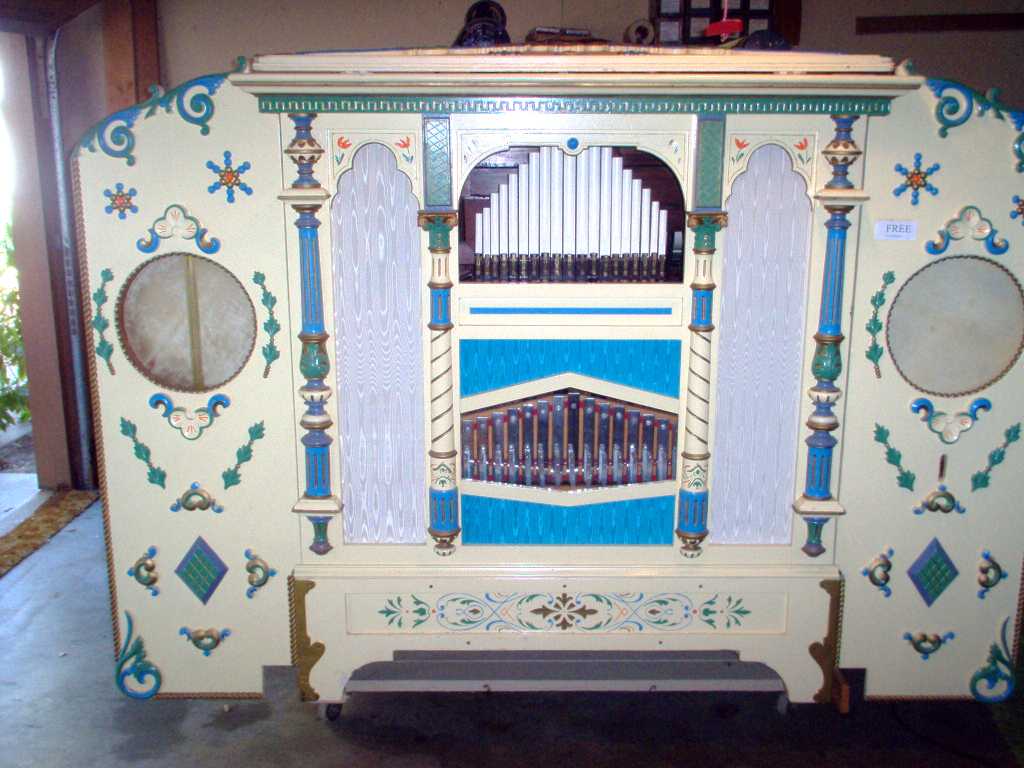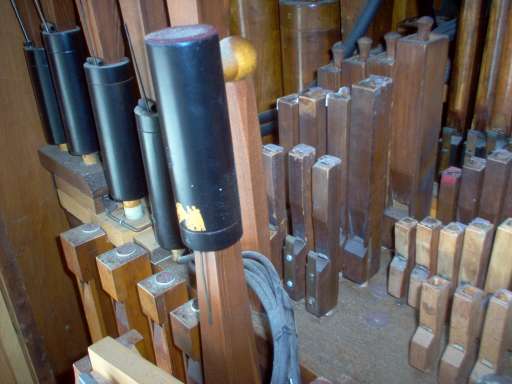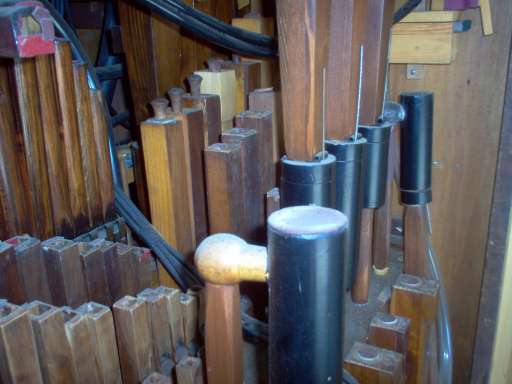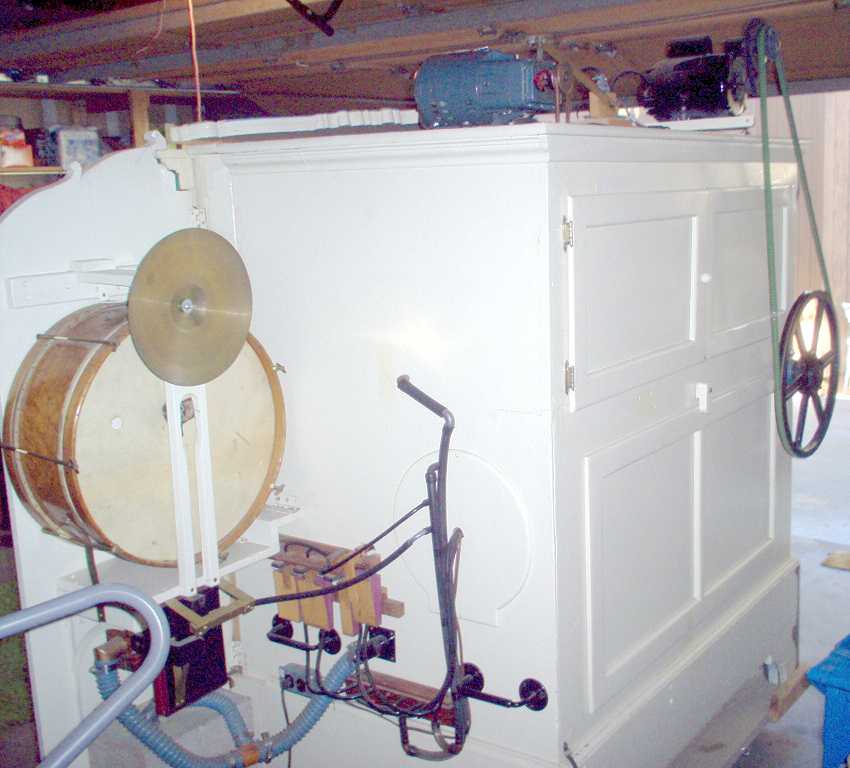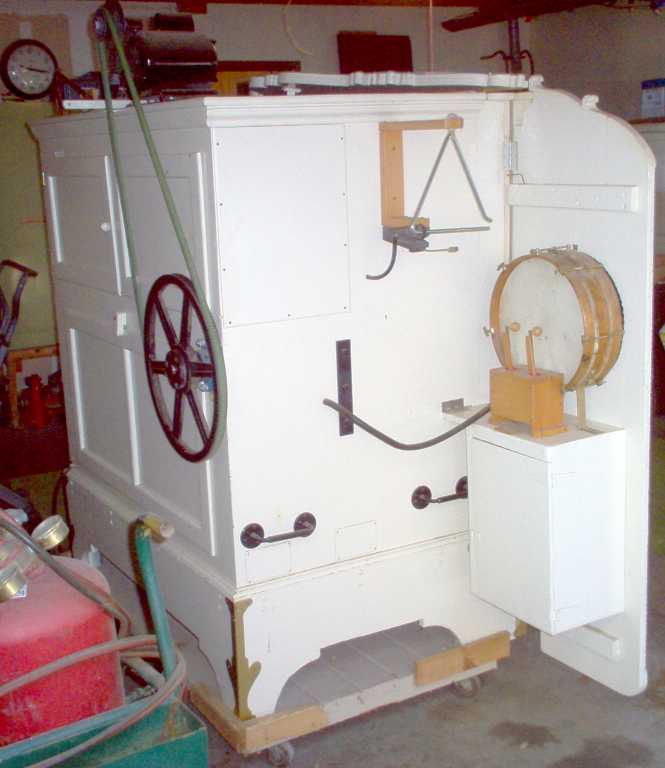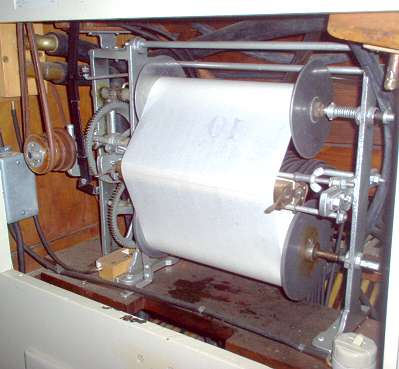| You Are Not Logged In | Login/Get New Account |
|
Please Log In. Accounts are free!
Logged In users are granted additional features including a more current version of the Archives and a simplified process for submitting articles. |
|
MMD
 Gallery
Gallery
 Pictures
Pictures
 Conway
Conway
|
|
Plays Wurlitzer 165 Music Rolls by Jack M. Conway (040804 MMDigest)
Hi Group, I have recently acquired an organ of unknown origin. All of the guesses so far are that it is a German or Dutch. I have sent photos to Robbie that I hope he can post on MMD. It is the first time I have tried to send digital photos. I will list below all that I know or have been told about the organ. I am in hope that those familiar with Dutch and German organs will spot something that will assign it to a maker. I thank you in advance for any help and apologize for the length of the posting. The information lost all the tabs I put in when I pasted it in. Jack M. Conway
Mystery band organ This is what I know or have been told so far. 1. There appear to be 29 pneumatics with wires going to a point that I can't see on the top of the two valve decks. 2. Two tier valve boards top deck has 30 nipples two of which are capped and the bottom deck has 31 nipples two of which are capped. Decks near the nipples have penciled tuning notes (see below). 3. Vacuum is provided by two Lee unit boxes. 4. Vacuum reserve with spill found above the 2nd Lee unit to the right of the roll frame. 5. Roll frame driven by belt through top of case to separate drive motor. The motor is a Zero Max variable speed model M142X. 6. Wurlitzer 165 roll mounted on roll frame backwards. That is with the rubber stamped, label side of the roll against the tracker bar. Roll frame does not appear to be a Wurlitzer. 7. What I have seen of the pipes so far, at least 213 pipes: Pipes inside case: a. 19 curved front wood pipes with freins (Violin?) moved forward when case was extended. b. 20 reed resonator pipes, several folded, some mounted with open end up others open end down. (Trumpets, Trombones?) c. Tri-Mixture pipes in center behind the bells. Front row, smallest, 17 pipes, second row 22 pipes, third row 22 pipes. d. 12 pipes to left of mixture: First row 4 pipes with freins, second row 4 open pipes, third row 4 stopped pipes. e. 18 pipes to right of mixture: First row 6 pipes with freins, second row 6 open pipes, third row 6 stopped pipes. f. 6 open pipes with tuning slides in center behind front violins. g. 12 inverted stopped pipes in front and in between trumpets. h. 16 darker wood pipes with curved fronts and freins behind bells and trumpets. Pipes Under case: i. 22 stopped pipes, in pyramid, centered on front edge of case. j. 12 large pipes 6 on each side of case. k. 6 folded open pipes. l. 9 open pipes parallel to back of case at the back of the case. 8. Bell bars added. Bells are marked left to right: G, F, D#, C#, B, A, G, F, E, F#, G#, A#, C, D, E, F#. The longest bar is right of center (E), next shorter bar is left of center (F#), the next shorter bar is to the right and so on. Case extended about 4 inches to make room for them. 9. Organ originally was built as a barrel organ. The round barrel change port cover is still there. 10. The main organ case as built was 57" wide at the molding, widest point, by 38-1/2 inches deep from the tilt up facade to the back of the case (minus 4 inch case extension 34-1/2 inches) by 64 inches from bottom of leg to top of case. The tilt up facade is 16 inches from the top of the case to the top center of the facade. 11. The depth of the organ at its widest point from flywheel hub to front of facade 42 inches. 12. From top of case to top of pump drive motor 11 1/2 inches. This motor is a capacitor start and the makers plate has been painted over. It drives the pump flywheel with a pre-punched adjustable V belt with clip. It operates the pressure bellows in the bottom of the case. 13. From top of case to top of roll drive motor 6-1/2 inches. The motor is a Zero Max variable speed model M142X. 14. Snare drum wing 20 inches wide by 12 inches deep by 66 inches high. Has a storage cabinet on the back of it. Added when case was extended to add bells. Drum is 14-3/4 inches in diameter and 5 1/2 inches deep. It has two beaters. 15. Base drum wing 20 inches wide, by 15 inches deep by 66 inches high. Second Lee vacuum unit mounted on back of wing. Added when case was extended to add bells. Drum is 20-1/2 inches in diameter and 9-1/2 inches deep. Mounted on the back of the drum is a 12 inch cymbal. Single beater strikes drum and cymbal. Cymbal striker broken off. 16. Has 9-inch triangle mounted on main case on snare drum side. 17. Two people viewing the organ believe that it could be a Bruder. 18. One person viewing photographs of the organ believes that it could be a Chiappa. 19. The person restoring it 18 years ago believed it to be a Ruth. One person viewing the organ also believed it to be a Ruth. 20. It was believed that the organ was converted to Wurlitzer 165 music music at the Wurlitzer factory. I don't believe this to be true as the roll frame does not appear to be Wurlitzer. One person looking at it thought that it might be from a Robotyper, a roll operated typewriter. The roll on the roll frame is mounted backwards. There are no Wurlitzer Unit Valves anywhere in the organ. 21. The sliders which were probably operated by hand originally are now operated by pneumatics mounted on the outside of the case. 22. The organ is free standing on a platform that is 59 inches deep by 32-1/2 inches deep by 7-1/2 inches high supported by (4) 3-inch casters. 23. Weight of organ on platform estimated to be 1000 to 1200 pounds [450 to 550 kilograms]. 24. A pneumatic is mounted to the left of the roll frame. It is pushed in to play and pulled out to play. The following is the tuning scale penciled on the decks near the nipples: * = capped off, NM = No Mark.
Numbered from left to right:
1 B/B AC/A*
Data Sheet from rebuilder:
Tracker Bar Layout:
1 BLANK
09 August 2004 |
|
|
|
|
|
|
|
|
|
CONTACT FORM: Click HERE to write to the editor, or to post a message about Mechanical Musical Instruments to the MMD Unless otherwise noted, all opinions are those of the individual authors and may not represent those of the editors. Compilation copyright 1995-2026 by Jody Kravitz. Please read our Republication Policy before copying information from or creating links to this web site. Click HERE to contact the webmaster regarding problems with the website. |
|
|
||||||
|
